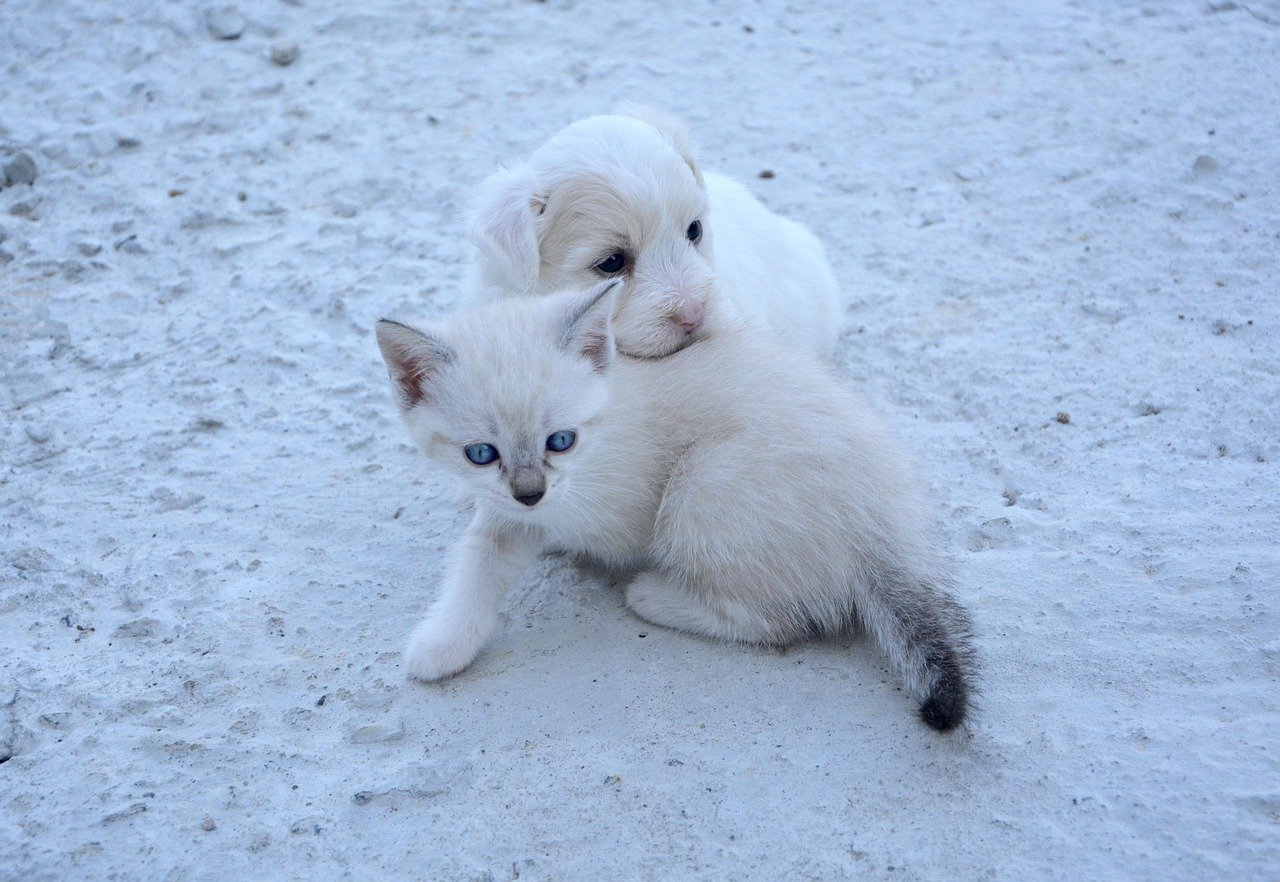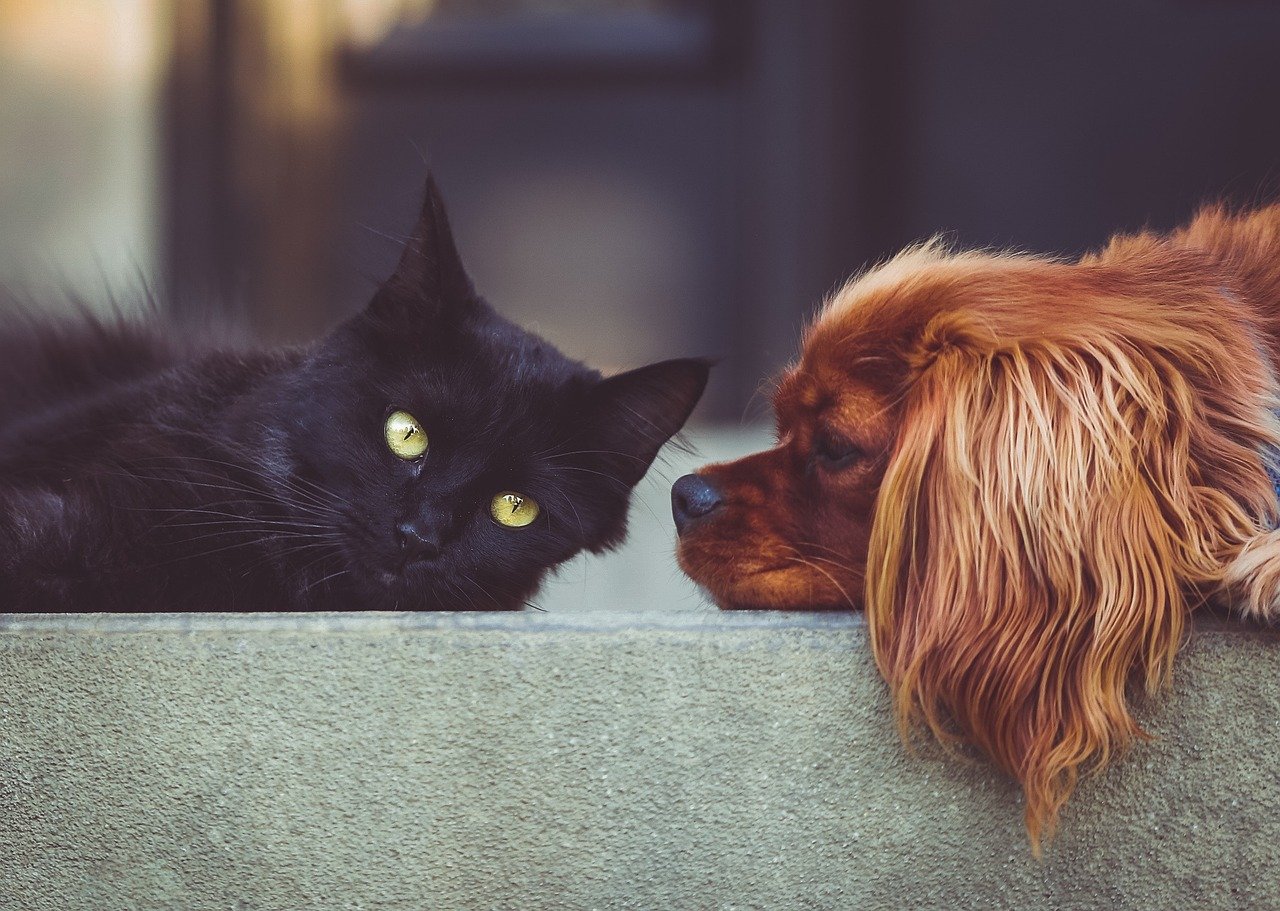Cats and dogs, despite the age-old saying that they fight like cats and dogs, can often form the most heartwarming friendships. For many pet owners, cultivating a harmonious relationship between their feline and canine companions is a dream come true. Imagine witnessing your cat and dog snuggled up together, sharing a nap or playfully chasing each other around the house. While it might seem challenging at first, with a little patience and the right approach, your pets can indeed become the best of friends. Here are eight smart strategies to help you on this journey.
Understanding Their Unique Personalities
When embarking on the journey of uniting a cat and a dog, it’s vital to first understand their distinct personalities. Just like humans, every cat and dog has its own temperament and quirks. Some cats are naturally more sociable, while others prefer solitude. Similarly, some dogs are energetic and eager to make friends, while others might be more reserved. By observing their behaviors, you can tailor your approach to suit their individual needs, ensuring a smoother introduction process.
Consider your pets’ past experiences. A dog that has had positive experiences with cats in the past might be more open to a feline friend. On the other hand, a cat that has had a negative encounter with a dog may require more time and patience. Understanding these nuances will help you predict potential challenges and successes. It’s much like learning the preferences of two friends before setting them up on a blind date, aiming for compatibility and harmony.
Introducing Them Slowly and Carefully

The first meeting between your cat and dog should be approached with caution and care. Rushing this process might lead to unnecessary stress or tension. Start by allowing them to get used to each other’s scent. You can do this by swapping their bedding or toys for a few days. This way, they can become familiar with each other’s presence without the immediate pressure of a face-to-face meeting.
When it’s time for their introduction, choose a neutral space where neither animal feels territorial. Keep the initial interactions short and supervised, gradually increasing the time as they become more comfortable. Think of it as introducing two people at a party and ensuring they have enough space to retreat if they feel overwhelmed. Patience is key here, as forcing interactions can lead to setbacks.
Creating Positive Associations

One of the most effective ways to foster friendship between your cat and dog is by creating positive associations. Whenever they are in each other’s presence, reward them with treats, affection, or playtime. This will help them associate their time together with positive experiences, reducing any potential anxiety or hostility.
It’s much like offering a child a reward for good behavior, reinforcing that being together is a good thing. Over time, both your cat and dog will begin to look forward to these shared moments. Be consistent with your rewards and ensure that both pets feel equally valued and appreciated, avoiding jealousy or rivalry.
Establishing Safe Spaces
Both cats and dogs need their personal space to retreat to when they feel overwhelmed or need a break. For a cat, this might be a high perch or a secluded nook, while a dog might prefer a cozy bed or crate. These safe spaces should be respected by both pets, allowing them the freedom to retreat whenever they feel the need.
Imagine a busy household where everyone needs a moment of peace now and then. Providing these sanctuaries ensures that your pets have a place to decompress, reducing stress and promoting a more peaceful coexistence. Encourage your cat and dog to respect each other’s spaces and avoid forcing interactions when one seeks solitude.
Maintaining Routine and Consistency
Pets thrive on routine, and maintaining a consistent schedule can help ease the transition from strangers to friends. Regular feeding times, play sessions, and quiet moments together can create a sense of security and predictability for both your cat and dog. This consistency helps them understand what to expect, reducing anxiety and promoting harmony.
Consider your daily routine and how you can incorporate both pets into it. Whether it’s a joint play session in the morning or a shared nap time in the afternoon, these regular interactions will help them bond. Much like a family dinner, these moments of togetherness foster a sense of belonging and companionship.
Training and Reinforcing Good Behavior
Training is an essential component of ensuring a harmonious relationship between your cat and dog. Teaching them basic commands like “sit,” “stay,” and “leave it” can prevent unwanted behavior and promote mutual respect. Positive reinforcement, such as treats or praise, can encourage them to behave appropriately around each other.
Think of training as laying the groundwork for a successful relationship. By setting clear boundaries and expectations, both pets will learn how to interact respectfully. Regular training sessions not only improve behavior but also strengthen the bond between you and your pets, fostering a sense of trust and cooperation.
Monitoring Interactions and Intervening When Necessary

While it’s important to allow your cat and dog to interact, monitoring their behavior is crucial to ensuring their safety and well-being. Watch for signs of aggression or discomfort, such as growling, hissing, or raised fur. If tensions arise, intervene calmly and separate them to prevent any potential conflict.
Think of yourself as a mediator, ensuring that both parties feel heard and respected. Over time, as they learn to navigate their relationship, you’ll need to intervene less frequently. However, always remain vigilant and ready to step in if needed, ensuring a peaceful and harmonious household.
Celebrating Small Victories
Every small step towards friendship is a victory worth celebrating. Whether it’s a shared nap, a playful chase, or simply coexisting peacefully in the same room, these moments are milestones in their journey to becoming best friends. Acknowledging and celebrating these achievements reinforces positive behavior and encourages continued progress.
Imagine cheering for a child’s first steps; these small victories are just as significant. By celebrating these moments, you not only boost your pets’ confidence but also strengthen the bond between them. Over time, these small victories will add up, leading to a lifelong friendship built on trust and companionship.
In conclusion, helping your cat and dog become best friends requires patience, understanding, and a little bit of strategy. By taking the time to understand their personalities, introducing them carefully, and fostering positive interactions, you can cultivate a harmonious relationship that brings joy to your household. Remember, every pet is unique, and with love and dedication, your furry companions can indeed become the best of friends.

Alex is a born and raised Capetonian with a strong love for animals and the outdoors. She is a Third-year veterinary student at the University of Pretoria in South Africa. She also completed a BSc in Animal Science at Stellenbosch University, where her passion for working with animals only strengthened. She has always surrounded herself with animals and has been fortunate enough to work closely with them.





